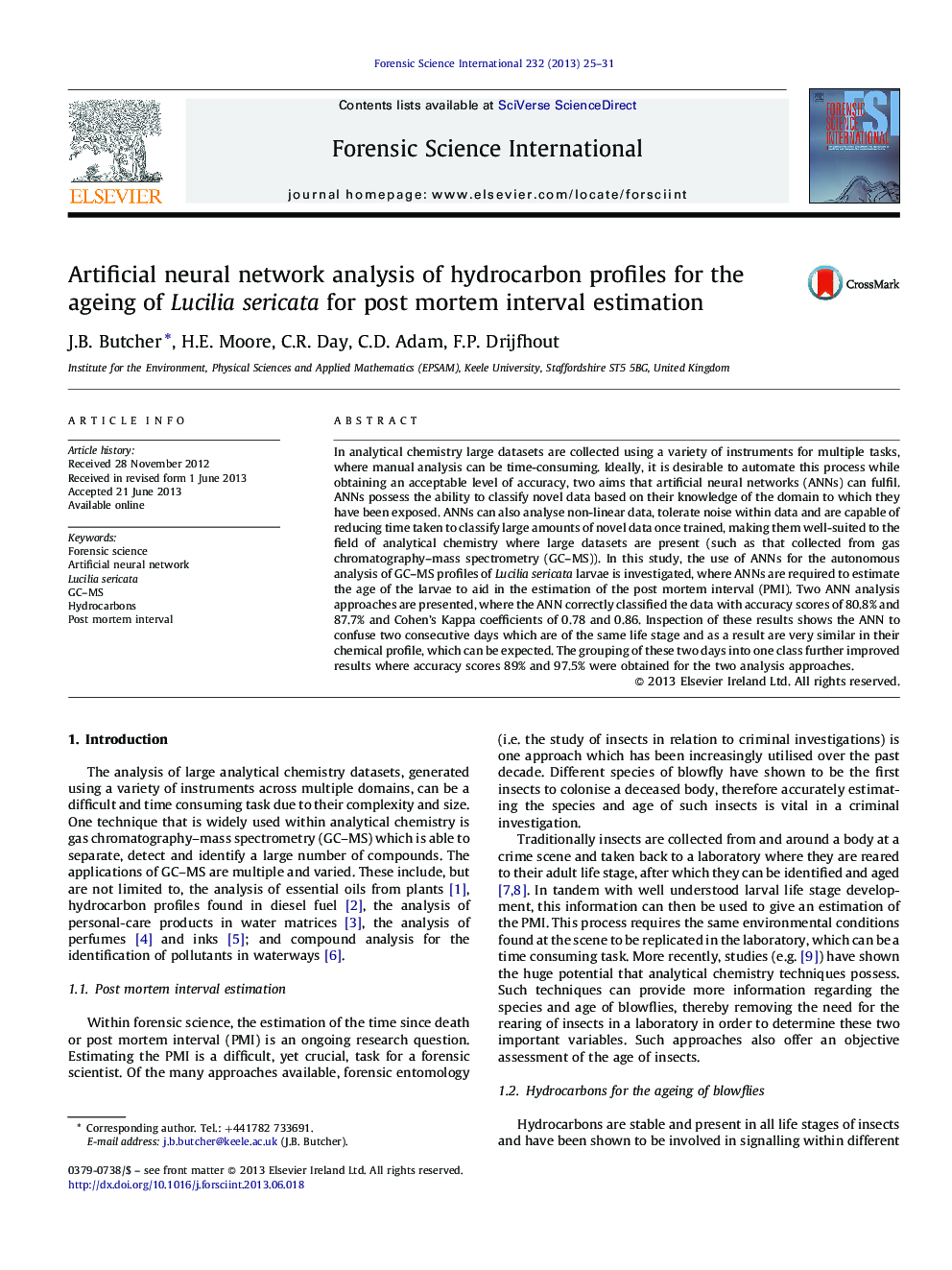| Article ID | Journal | Published Year | Pages | File Type |
|---|---|---|---|---|
| 6552832 | Forensic Science International | 2013 | 7 Pages |
Abstract
In analytical chemistry large datasets are collected using a variety of instruments for multiple tasks, where manual analysis can be time-consuming. Ideally, it is desirable to automate this process while obtaining an acceptable level of accuracy, two aims that artificial neural networks (ANNs) can fulfil. ANNs possess the ability to classify novel data based on their knowledge of the domain to which they have been exposed. ANNs can also analyse non-linear data, tolerate noise within data and are capable of reducing time taken to classify large amounts of novel data once trained, making them well-suited to the field of analytical chemistry where large datasets are present (such as that collected from gas chromatography-mass spectrometry (GC-MS)). In this study, the use of ANNs for the autonomous analysis of GC-MS profiles of Lucilia sericata larvae is investigated, where ANNs are required to estimate the age of the larvae to aid in the estimation of the post mortem interval (PMI). Two ANN analysis approaches are presented, where the ANN correctly classified the data with accuracy scores of 80.8% and 87.7% and Cohen's Kappa coefficients of 0.78 and 0.86. Inspection of these results shows the ANN to confuse two consecutive days which are of the same life stage and as a result are very similar in their chemical profile, which can be expected. The grouping of these two days into one class further improved results where accuracy scores 89% and 97.5% were obtained for the two analysis approaches.
Keywords
Related Topics
Physical Sciences and Engineering
Chemistry
Analytical Chemistry
Authors
J.B. Butcher, H.E. Moore, C.R. Day, C.D. Adam, F.P. Drijfhout,
